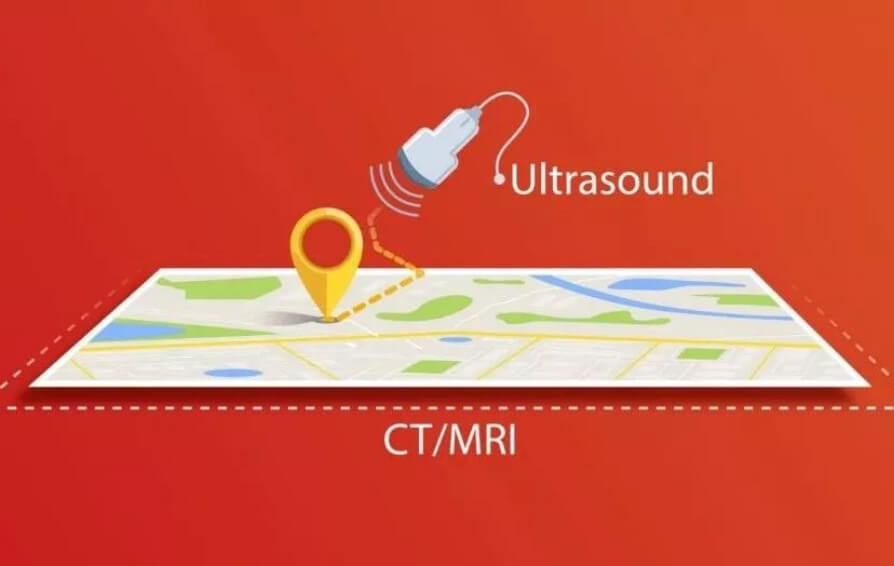Nowadays, fusion imaging is widely acknowledged in ultrasound clinical practice as it combines the advantages of CT/MRI and the real time ultrasound together to improve the accuracy of pathology diagnosis as well as ultrasound guided intervention.
A vivid analogy is often used to describe the concept of fusion imaging, car GPS navigation system. The pre-collected image data of CT/MRI is equal to the map in GPS system. Real-time ultrasound image is similar to the sight of human eyes. Through the combination of these two elements, it tells the car – which represents the probe in the examination – where to go.
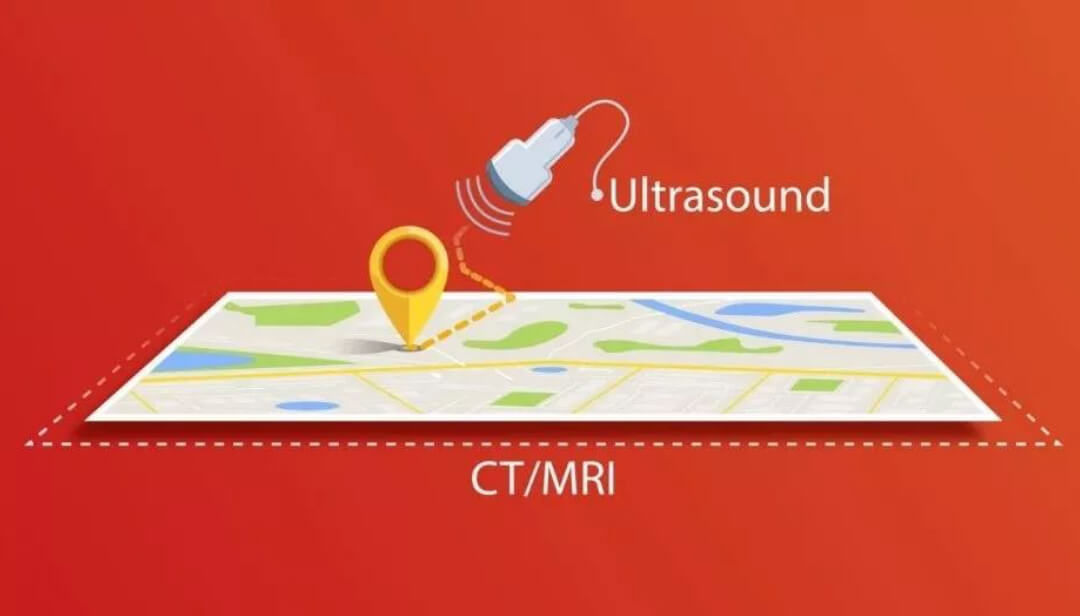
Why Fusion Imaging Matters?
Generally speaking, each imaging modality has its pros and cons.
Ultrasound examination is often characterized as real-time, radiation-free and cost-effective compared with CT/MRI. However, due to the relatively lower resolution and blind zone, sometimes it's difficult to detect some lesions through ultrasound scanning.
On the contrary, the higher spatial resolution and full FOV from CT/MRI manage to detect lesions more precisely. Nonetheless, CT/MRI exam is often static, expensive and brings unavoidable ionizing radiation to patients.
Consequently, Fusion imaging which takes advantages of each modality, is born to break those limits.
Fusion Contributes to More Accurate Diagnosis
As mentioned, Fusion imaging is a very important tool for diagnosis. For lesions can't be clearly observed or blocked by lung or ribs, fusion imaging helps to mark the lesion accurately on ultrasound, which significantly improves the accuracy of diagnosis.
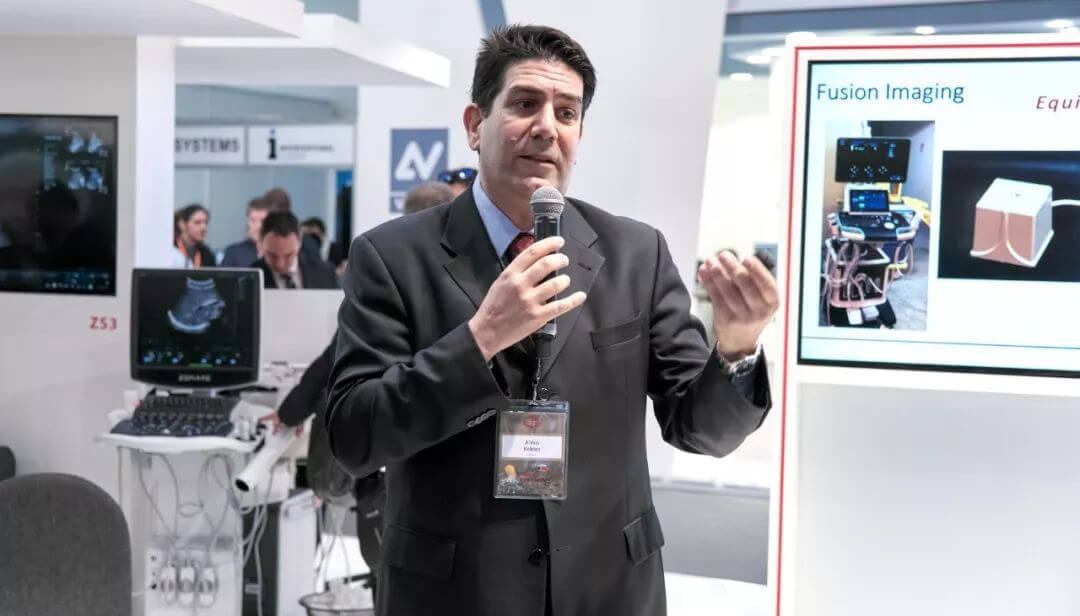
"It allows clinicians to follow and trace up the same lesion that they have seen on the CT/MRI before which guarantees the reliability and repeatability." said Alexis Kelekis, Associate Professor of Diagnostic and Interventional Musculoskeletal Radiology at the Radiology Department II, University of Athens.
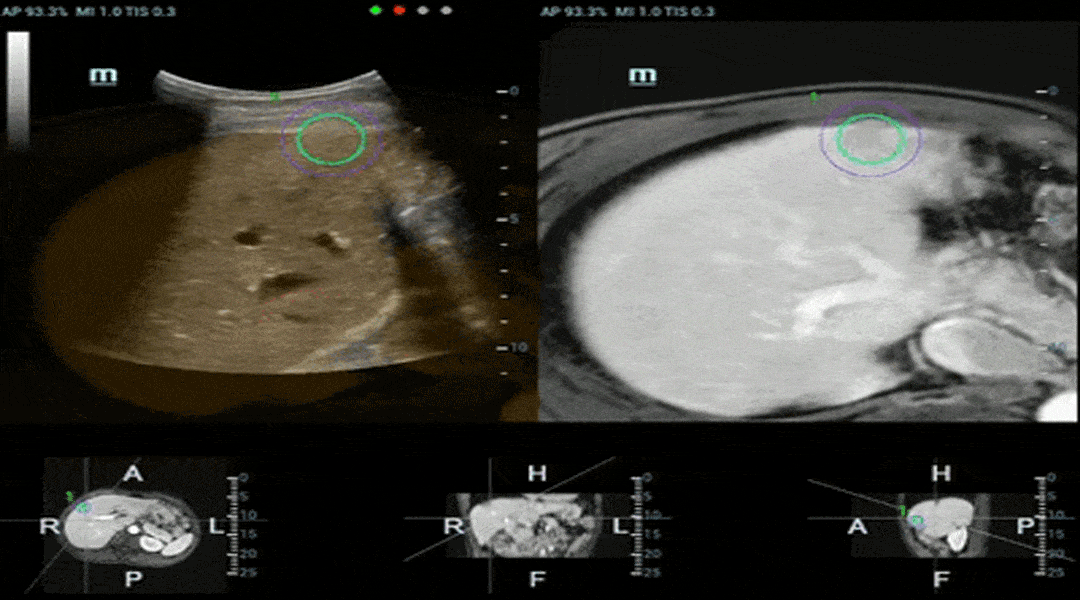
Fusion Guarantees More Precise Lesion Ablation
Apart from diagnosis, fusion imaging can also be applied in the ultrasound guided intervention procedure.
A typical clinical application scenario comes to the ultrasound-guided radiofrequency ablation when pure ultrasound fails to guide insertion of the needle accurately. In such case, based on lesion's target marker in both MRI and ultrasound images, Fusion can guide the needle tip to the lesion location precisely, increasing the accuracy of positioning effectively.
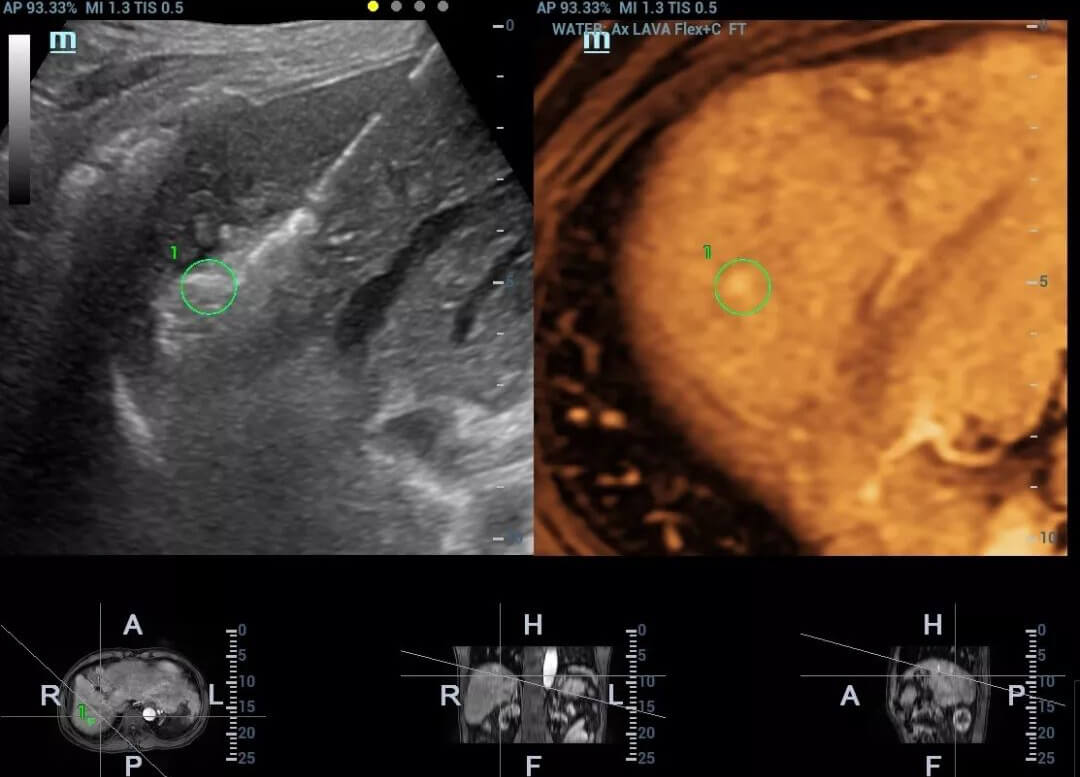
Despite of obvious advantages of fusion imaging, the inevitable respiratory motion of the patient which decreases the accuracy of fusion, remains a big clinical challenge.
iFusion with Respiration Compensation
To address such clinical challenge, Mindray rolls out its innovative and exclusive respiration compensation technology, supported by a sensitive magnetic motion sensor with millimeter accuracy, aiming to help eliminate distortion and fusion inaccuracy caused by patient respiration.
Compared with routine fusion imaging procedure, the new generation iFusion with respiration compensation just needs to add one more step before fusion navigation step.
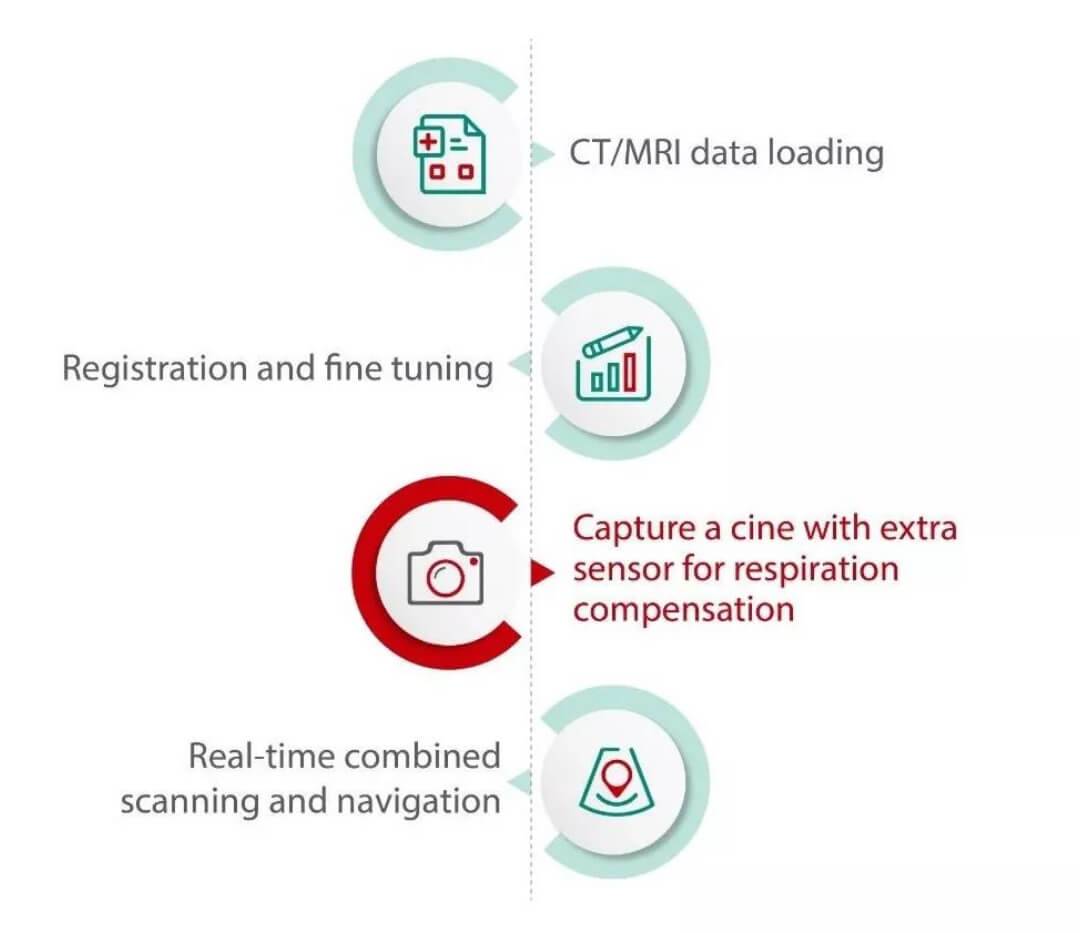
It has been proved in clinical experiments that Mindray's iFusion can correct approximately 80%[1] of fusion errors caused by respiratory motion and markedly improve the fusion accuracy of a full respiration cycle.
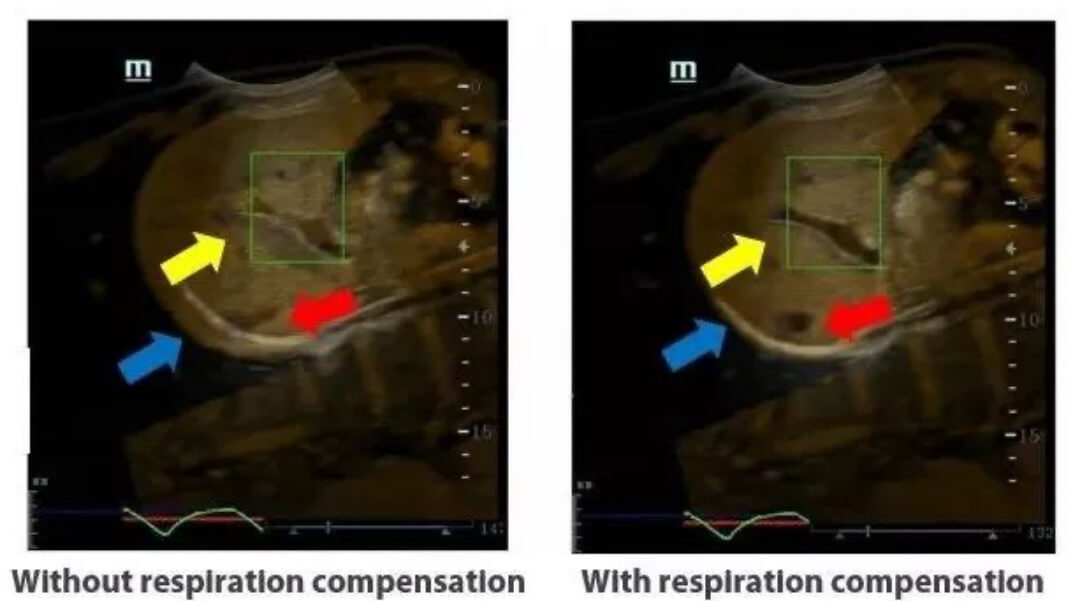
Besides Respiration Compensation, the quad mode has also been highly validated and welcomed by clinicians. It provides separate fusion imaging of CT/MRI with tissue and contrast enhanced ultrasound images, making it easy to visualize lesions on different types of images. This real-time and comprehensive multiple modality displaying renders better diagnostic confidence.
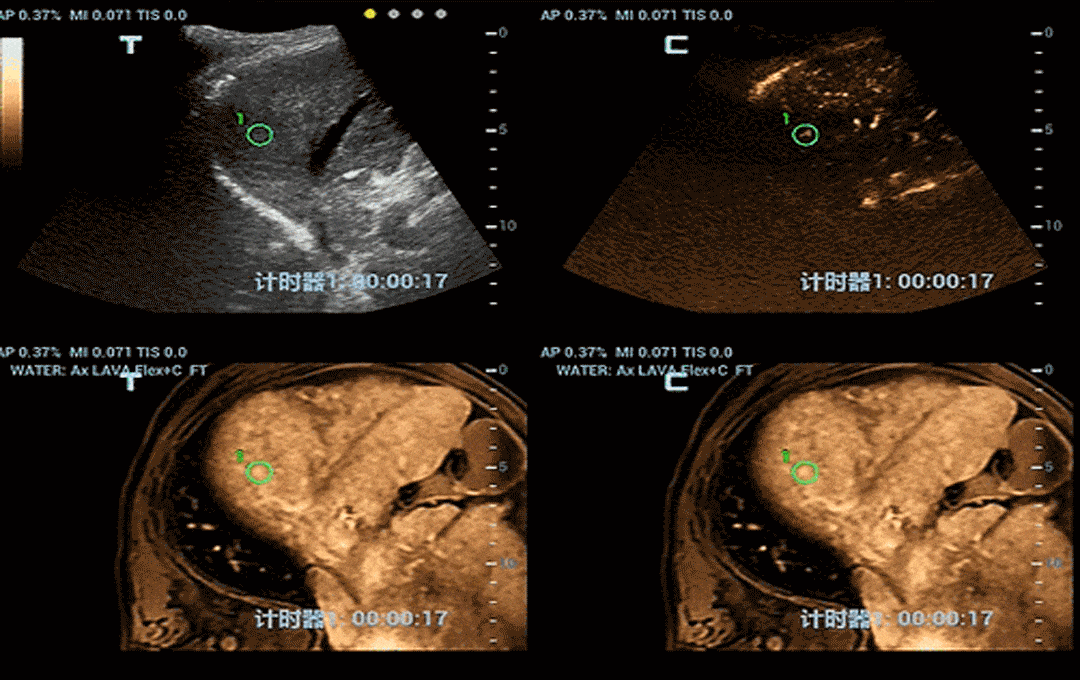
In a nutshell, merging the advantages of each modality is extremely helpful in the daily scanning practice and Mindray continuously evolves its healthcare systems based on profound insights into crucial clinical needs.
The innovative and patented Mindray technology, iFusion, provides remarkable clinical values by remedying the respiration-induced artifact effectively. As a result, it renders more confidence to clinicians on diagnosing intractable lesions as well as conducting interventional therapy, markedly improving the accuracy of fusion imaging to a new level.
Reference:
[1] "A New Generation of Fusion Imaging: iFusion with Respiration Compensation", Jingang Kang, 2016

